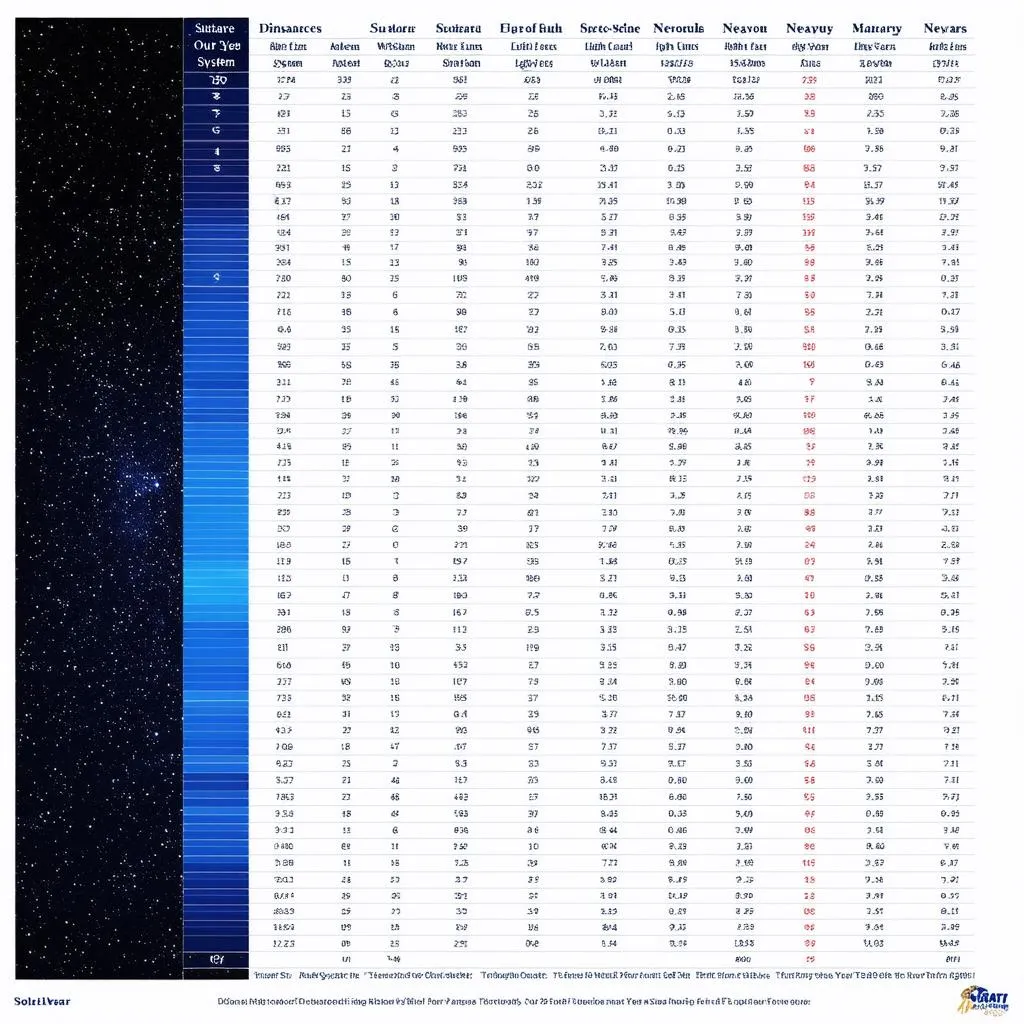Imagine standing on the edge of the Grand Canyon, its vastness stretching before you like a miniature version of the cosmos. Now, picture the sun setting, its last rays of light painting the canyon walls in fiery hues. It’s a breathtaking sight, and it makes you think: how far did that light travel just to reach my eyes? Now, magnify that distance exponentially and you might start to grasp the incredible distance light covers in a year.
Light Years: A Cosmic Yardstick
When we talk about distances across the universe, using miles or kilometers simply doesn’t cut it. We need a unit of measurement as grand as the cosmos itself, and that’s where the light-year comes in.
A light-year isn’t a measure of time; it’s a measure of the astounding distance light travels in one Earth year. Light zips along at a breakneck speed of approximately 299,792 kilometers per second (about 186,282 miles per second). To put that into perspective, in just one second, a beam of light could circle the Earth over seven times!
So, how far does light travel in a year? A mind-boggling 5.88 trillion miles (9.46 trillion kilometers). That’s the equivalent of circling the Earth over 236 million times!
A Journey Through the Stars: Visualizing Light Years
Let’s take a hypothetical trip through space to really grasp the immensity of a light-year:
Our First Destination: Proxima Centauri (4.24 light-years away): Our closest stellar neighbor is Proxima Centauri, a red dwarf star. If we could travel at the speed of light, it would still take us over four years to reach it! This emphasizes the vast distances even between our sun and its closest neighbors.
Next Stop: The Orion Nebula (1,344 light-years away): This stellar nursery, a swirling cloud of gas and dust where stars are born, is a feast for the eyes. The light we see from the Orion Nebula today embarked on its journey towards Earth over a millennium ago.
The Andromeda Galaxy: A Distant Neighbor (2.5 million light-years away): This majestic spiral galaxy is the most distant object visible to the naked eye. When you gaze at Andromeda, you’re witnessing light that originated millions of years ago, offering a glimpse into the universe’s distant past.
 Light Year Comparison
Light Year Comparison
The Significance of Light Years in Astronomy and Beyond
Light-years are crucial for astronomers to study the universe. By observing distant objects, we’re essentially looking back in time. The light from a galaxy billions of light-years away provides valuable information about the early universe and how galaxies evolve.
Moreover, understanding light-years helps us comprehend the sheer scale of the cosmos and our place within it. It fosters a sense of wonder and curiosity about the mysteries that lie beyond our own planet.
FAQs About Light Years and Cosmic Distances
If we can’t travel at the speed of light, how can we explore distant stars and galaxies? This is a question that has puzzled scientists and science fiction writers for years. While faster-than-light travel remains theoretical, concepts like wormholes and warp drives offer tantalizing possibilities for future interstellar voyages.
Is it possible to travel back in time by traveling faster than light? According to Einstein’s theory of relativity, traveling faster than light could theoretically allow for time travel. However, this remains a highly debated topic in physics, and the practicalities of such travel are still far beyond our current technological capabilities.
 Telescope and Distant Galaxy
Telescope and Distant Galaxy
Travelcar.edu.vn: Your Guide to Earthly and Cosmic Journeys
Just as light-years help us navigate the cosmos, TRAVELCAR.edu.vn is your compass for exploring the wonders of our own planet. Whether you’re yearning for a relaxing beach vacation, an adventurous trek through the Himalayas, or a cultural immersion in ancient cities, TRAVELCAR.edu.vn offers a wealth of information and inspiration for your next adventure.
Before you embark on your next journey, consider the principles of Feng Shui to enhance your travel experiences. Selecting auspicious dates for travel, packing items in colors that promote positive energy, and choosing accommodations with harmonious layouts can all contribute to a smoother and more fulfilling trip.
For those interested in exploring further reaches of knowledge, delve into the intriguing world of passport travel history in Canada or learn about the time it would take to travel to Jupiter – a journey that, while not measured in light-years, is still an incredible feat!
Our Place in the Universe: A Never-Ending Exploration
The next time you gaze up at a star-studded sky, remember the incredible journeys those beams of light undertook to reach your eyes. Each twinkle represents a story from the distant past, a testament to the universe’s grandeur and our own boundless capacity for wonder.
What are your thoughts on the vastness of space and the distances light travels? Share your reflections in the comments below!

